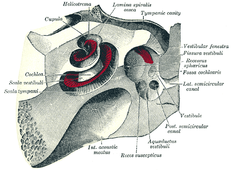Featured Quizzes
User Quizzes
Create Quiz
Data and Charts
Badges and Games
About JetPunk
JetPunk Shop
Dark Mode

Human Biology Multiple Choice Quiz #2
Test out your Human Biology knowledge again!
Rate:
Last updated: November 15, 2021
You have not attempted this quiz yet.
More quiz info >>
| First submitted | April 5, 2019 |
| Times taken | 11,917 |
| Average score | 73.3% |
| Rating | 4.84 | Report this quiz | Report |
3:00
The quiz is paused. You have remaining.
Scoring
You scored / = %
This beats or equals
% of test takers
also scored 100%
The average score is
Your high score is
Your fastest time is
Keep scrolling down for answers and more stats ...
1.
What is the most abundant mineral in the human body?
Magnesium
✓
Iron
✓
Calcium
✓
2.
The smallest bones in the body are found in the...?
Nose
✓
Ear
✓
Fingers
✓
Malleus, incus, and stapes (hammer, anvil, stirrup) known as the ossicles of the middle ear
3.
Eye colour is defined by which circular structure?
Cornea
✓
Macula
✓
Iris
✓
4.
What is hardest and most highly mineralized substance of the body?
Tooth Enamel
✓
Finger Nails
✓
Skull Bone
✓
Tooth enamel ranks 5 on Mohs hardness scale (between steel and titanium)
5.
What is the largest muscle in the human body?
Trapezius
✓
Triceps
✓
Gluteus maximus
✓
Forrest Gump was shot in the gluteus maximus
6.
If you suffer from Scurvy, you are deficient in?
Ascorbic Acid
✓
Iron
✓
Riboflavin
✓
Ascorbic acid is the chemical name of Vitamin C
7.
The term 'Leukemia' literally translates to?
White blood
✓
Red blood
✓
Thin Blood
✓
Leukos (λευκός), meaning "white", and haima (αἷμα), meaning "blood"
8.
Pre-eclampsia is a potentially serious condition that can arise during...?
Pregnancy
✓
Puberty
✓
Masturbation
✓
When it arises, the condition begins after 20 weeks of pregnancy.
9.
How many bones are there in an adult human body?
72
✓
150
✓
206
✓
It is composed of around 270 bones at birth – this total decreases to around 206 bones by adulthood after some bones fuse together.
10.
Which blood group is considered to be an universal donor?
AB+
✓
O-
✓
A+
✓
Not 100% accurate. Google 'Bombay Phenotype'.
11.
...and people with which blood group are considered to be universal recipients?
O-
✓
AB+
✓
B+
✓
12.
In which part of a human cell would you find DNA?
Cytoplasm
✓
Cell membrane
✓
Nucleus
✓
DNA is also found in the mitochondria of eukaryotic cells.
13.
Which of these is considered to be a vestigial organ?
Gall Bladder
✓
Appendix
✓
Spleen
✓
Experts have however begun to question if the appendix is vestigial.
14.
REM stands for...?
Respiratory Effusion Mechanism
✓
Rapid Eye Movement
✓
Rich Efficient Malnutrition
✓
15.
The adrenal gland lies above which vital organ
Kidney
✓
Liver
✓
Lung
✓
Produces the hormone adrenaline and steroids.
herokdb
+2
Level 36
Nov 14, 2021
Love the quiz, just a correction: the largest muscle in human body is the sartorius
overtired
+4
Level 84
Nov 14, 2021
I think that's the longest, not the largest.
gerobach
+2
Level 75
Nov 15, 2021
Your Gluteus Maximus is the largest! But thanks for your comment! Try the other 2 Human biology quizzes also! :)
DonTheLamplighter
+1
Level 84
Nov 14, 2021
You might want to revisit the wording of Question #12.
gerobach
+1
Level 75
Nov 15, 2021
What was wrong with it? I have re-worded all the same.
Speed4TheNeed
+3
Level 87
Apr 26, 2022
Don might just be being technical? Yes, DNA resides in the nucleus, but the nucleus resides in the cytoplasm, which resides inside of the cell membrane. This would technically make all 3 answers correct. Personally, I have no issue with the wording. It's clear enough what you're asking. Nominated.
gerobach
+2
Level 75
Apr 26, 2022
Thanks, I do not even remember how I originally worded it now, and thanks for the nomination!! :-)
luxwoodflowerpod
+1
Level 32
Aug 13, 2022
Howdy, just letting you know that most current research proves that the appendix isn't vestigial and serves a significant immune function. Consider changing to 'was believed to'.
gerobach
+3
Level 75
Aug 15, 2022
Hi. If you read the comments for each question once the quiz is over, you will see that I have stated exactly that. It has not been completely proven to have a significant function as the body still functions normally without it. Thanks.
ChallengeMaster
+2
Level 28
Sep 28, 2022
11/15
gerobach
+1
Level 75
Sep 30, 2022
Thanks for playing!
New and Popular
Save Your Progress
Human Biology MCQ
Quiz series by gerobach
Copyright H Brothers Inc, 2008–2024
Contact Us | Go To Top | View Mobile Site
